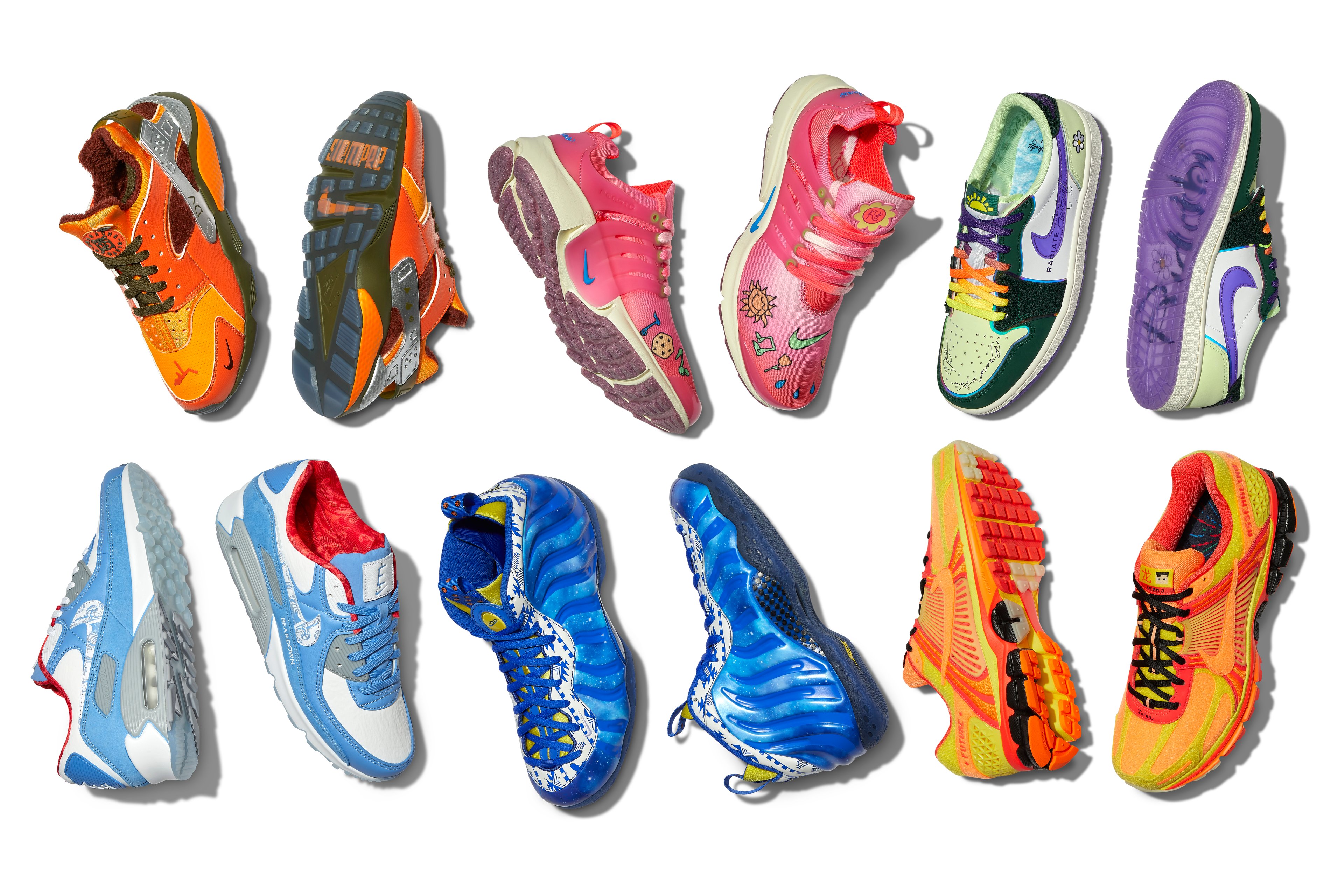
Nike's new HyperAdapt 1.0 self-lacing shoe platform. Image source: Nike.
Nike (NKE +1.00%) reported fiscal third-quarter 2016 results Tuesday after the bell. And though things didn't quite go as well as planned, by most measures the athletic footwear and apparel specialist turned in yet another solid quarter of growth.
More specifically, Nike's quarterly revenue climbed 7.7% year over year to $8.03 billion, and would have risen 14% had it not been for the negative effects of foreign currency exchange. That's slightly below Nike's (admittedly imprecise) guidance provided last quarter, which called for reported revenue to increase in the high-single- to low-double-digit percentage range.
To Nike's credit, however, this is also eerily reminiscent of last quarter's slight top-line shortfall, which the market was willing to overlook given the company's strong overall performance and encouraging guidance for the full year.
On the bottom line, net income climbed 20% year over year, to $950 million, and earnings per share increased 22%, to $0.55. Nike began repurchases under its new four-year, $12 billion share repurchase authorization approved this past November, buying back 11.1 million shares during the quarter for $649 million. By comparison -- and though we don't lend much credence to Wall Street's near-term demands -- analysts' consensus estimates called for higher revenue of $8.2 billion, and lower earnings of $0.49 per share.
Digging deeper
Nike CEO Mark Parker elaborated:
In the third quarter, NIKE delivered robust and balanced growth across our expansive, powerful portfolio. We grow by serving the athlete personally every day and, as we unveiled last week, through breakthrough innovation that gives us a foundation for growth for years to come. Combined with our strategic investments, world-class execution and financial discipline, NIKE consistently delivers value to our shareholders.
Regarding Parker's mention of "breakthrough innovation," note last week the company introduced something it calls "adaptive lacing," implemented in a Back to the Future-esque, self-lacing shoe dubbed HyperAdapt 1.0, which fellow Fool Daniel Sparks rightly asserted "has potential to represent a major new platform in athletic footwear."
Meanwhile, Nike's gross margin was deceptively flat from the same year-ago period, at 45.9%. Gross margin benefited from Nike's ability to command higher average selling prices and continued growth in its high-margin direct-to-consumer (DTC) business. On the latter, DTC revenue climbed an impressive 29% year over year, including 56% growth in online sales, and a 10% contribution from comparable-store sales growth and new locations. But these benefits were offset once again by foreign currency exchange and Nike's efforts to clear excess inventory. That said, currency headwinds won't persist forever. And to Nike's credit, this result was slightly better than guidance provided three months ago, when management suggested gross margin would decline 50 basis points.
Next, revenue from Converse declined 9% on a reported basis, to $489 million, and would have fallen 5% had foreign currencies not been a factor. As I suggested in my earnings preview last week, however, this shouldn't be a surprise as Nike continues to shift the Converse brand to a more direct operating model overseas. During this quarter's subsequent conference call, Nike CFO Andy Campion elaborated this quarter's year-over-year decline for Converse was primarily due to a shift in timing of shipments out of fiscal Q4 and into fiscal Q3 this year to ensure a smooth transition to a new enterprise resource management system.
Looking forward
Futures for NIKE brand footwear and apparel (scheduled for delivery from March 2016 through July 2016) climbed 12% on a reported basis, and 17% at constant currency. That's a notable deceleration from last quarter, when reported and constant-currency futures rose 15% and 20%, respectively, but it still represents solid growth and strong demand as Nike continues to build its business from a larger base. To be sure, futures rose in the double-digits across all geographies despite the impact of the stronger dollar against nearly every other global currency.
As a result, Nike held steady its guidance for the full fiscal year, which calls for gross margin expansion of roughly 50 basis points from last year, and full fiscal-year revenue growth in the mid-single-digit percentage range.
Finally, though planning for fiscal 2017 isn't complete, Nike currently expects revenue next fiscal year to grow in the high-single- to low-double digit percentage range on a reported basis, which should translate to growth in earnings per share in the low teens. That EPS growth will also be more heavily weighted toward the back half of next fiscal year, primarily as Nike plans to invest heavily early on in brand initiatives revolving around the Olympics in Rio and the European Football Championships.
In the end, though the market's initial reaction may not reflect as much, this quarter contained no big surprises and shows Nike is arguably stronger than ever. As Nike continues to deliver on its long-term goals to consistently expand its reach and generate shareholder value in the process, I think investors should be more than pleased with where the company stands today.






